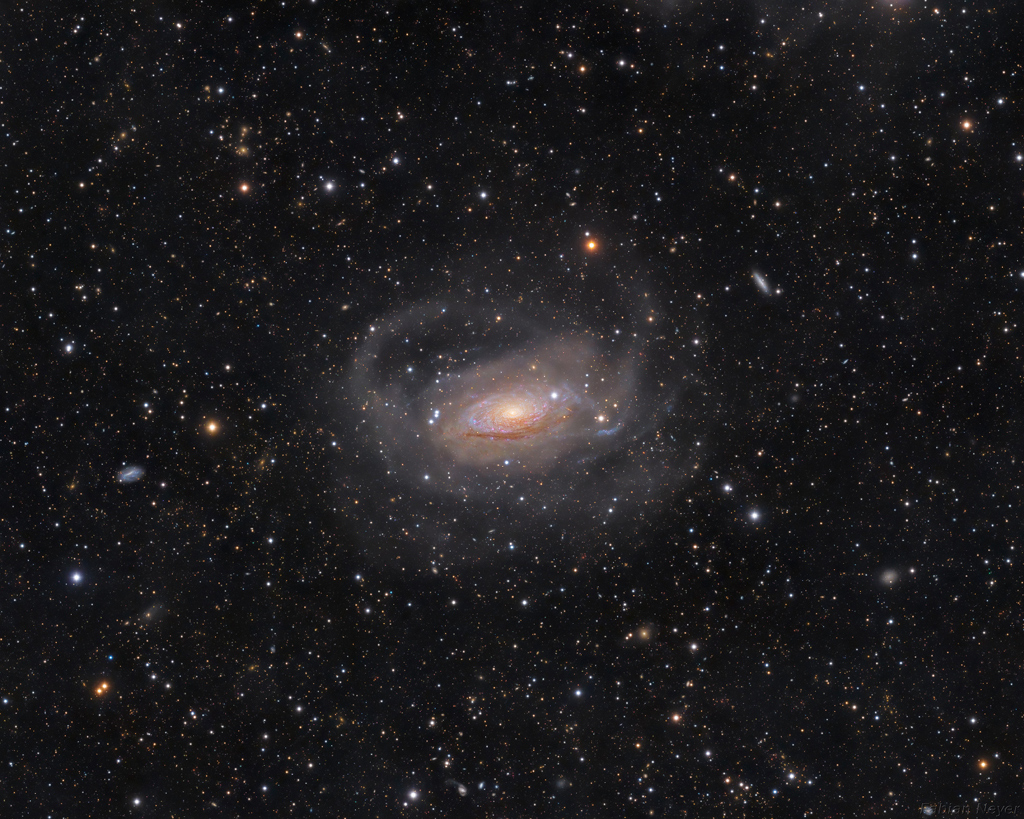Nombre total de pages vues
07/12/2020
METEOROLOGY - Mammatus Clouds over Mount Rushmore
2020 December 7
Image Credit & Copyright: Laure Mattuzzi
Explanation: What's that below those strange clouds? Presidents. If you look closely, you may recognize the heads of four former US Presidents carved into famous Mount Rushmore in South Dakota, USA. More obvious in the featured image are the unusual mammatus clouds that passed briefly overhead. Both were captured together by a surprised tourist with a quick camera in early September. Unlike normal flat-bottomed clouds which form when moist and calm air plateaus rise and cool, bumpy mammatus clouds form as icy and turbulent air pockets sink and heat up. Such turbulent air is frequently accompanied by a thunderstorm. Each mammatus lobe spans about one kilometer. The greater mountain is known to native Lakota Sioux as Six Grandfathers, deities responsible for the directions north, south, east, west, up, and down.
06/12/2020
AERONAUTIQUE - Boeing - projet X48
ASTRONOMY - M16: Pillars of Star Creation
2020 December 6
Image Credit: NASA, ESA, Hubble Space Telescope, J. Hester, P. Scowen (ASU)
Explanation: These dark pillars may look destructive, but they are creating stars. This pillar-capturing image of the inside of the Eagle Nebula, taken with the Hubble Space Telescope in 1995, shows evaporating gaseous globules (EGGs) emerging from pillars of molecular hydrogen gas and dust. The giant pillars are light years in length and are so dense that interior gas contracts gravitationally to form stars. At each pillars' end, the intense radiation of bright young stars causes low density material to boil away, leaving stellar nurseries of dense EGGs exposed. The Eagle Nebula, associated with the open star cluster M16, lies about 7000 light years away. The pillars of creation have been imaged more recently in infrared light by Hubble, NASA's Spitzer Space Telescope, and ESA's Herschel Space Observatory -- showing new detail.
05/12/2020
AERONAUTIQUE - Marcher sur l'eau
Dans les années 1900, une célèbre marque de chocolat leader sur son marché, Hildebrands, agrémentait ses tablettes de cartes postales imaginant l'an 2000. Celle-ci illustre la croyance selon laquelle, à l'aide de ballons gonflables, nous pourrions nous balader en marchant sur l'eau. Vous remarquerez les très pratiques petites chaussures-péniches en bois pour éviter de mouiller ses souliers.
ASTRONOMY - Mons Rumker in the Ocean of Storms
2020 December 5
Image Credit & Copyright: Jean-Yves Letellier
Explanation: Mons Rumker, a 70 kilometer wide complex of volcanic domes, rises some 1100 meters above the vast, smooth lunar mare known as Oceanus Procellarum, the Ocean of Storms. Daylight came to the area late last month. The lunar terminator, the shadow line between night and day, runs diagonally across the left side in this telescopic close-up of a waxing gibbous Moon from November 27. China's Chang'e-5 mission landing site is also in the frame. The probe's lander-ascender combination touch down on the lunar surface within a region right of center and north of Mons Rumker's domes on December 1. On December 3 the ascender left the Ocean of Storms carrying 2 kilograms of lunar material for return to planet Earth.
04/12/2020
ASTRONOMY - Curly Spiral Galaxy M63
2020 December 4
Image Credit & Copyright: Fabian Neyer, Rainer Spani
Collaboration Credit: I.D. Karachentsev, F. Neyer, R. Spani, T. Zilch
Explanation: A bright spiral galaxy of the northern sky, Messier 63 is nearby, about 30 million light-years distant toward the loyal constellation Canes Venatici. Also cataloged as NGC 5055, the majestic island universe is nearly 100,000 light-years across, about the size of our own Milky Way. Its bright core and majestic spiral arms lend the galaxy its popular name, The Sunflower Galaxy, while this exceptionally deep exposure also follows faint, arcing star streams far into the galaxy's halo. Extending nearly 180,000 light-years from the galactic center the star streams are likely remnants of tidally disrupted satellites of M63. Other satellite galaxies of M63 can be spotted in this remarkable wide-field image, made with a small telescope, including five newly identified faint dwarf galaxies, which could contribute to M63's star streams in the next few billion years.
03/12/2020
ASTRONOMY - Orion and the Ocean of Storms
2025 December 13 Orion and the Ocean of Storms Image Credit: NASA , Artemis 1 Explanation: On December 5, 2022, a camera on board the u...

-
2022 September 26 All the Water on Planet Earth Illustration Credit: Jack Cook, Adam Nieman, Woods Hole Oceanographic Institution ; Data ...
-
2025 May 11 The Surface of Venus from Venera 14 Image Credit: Soviet Planetary Exploration Program , Venera 14 ; Processing & Copyri...








